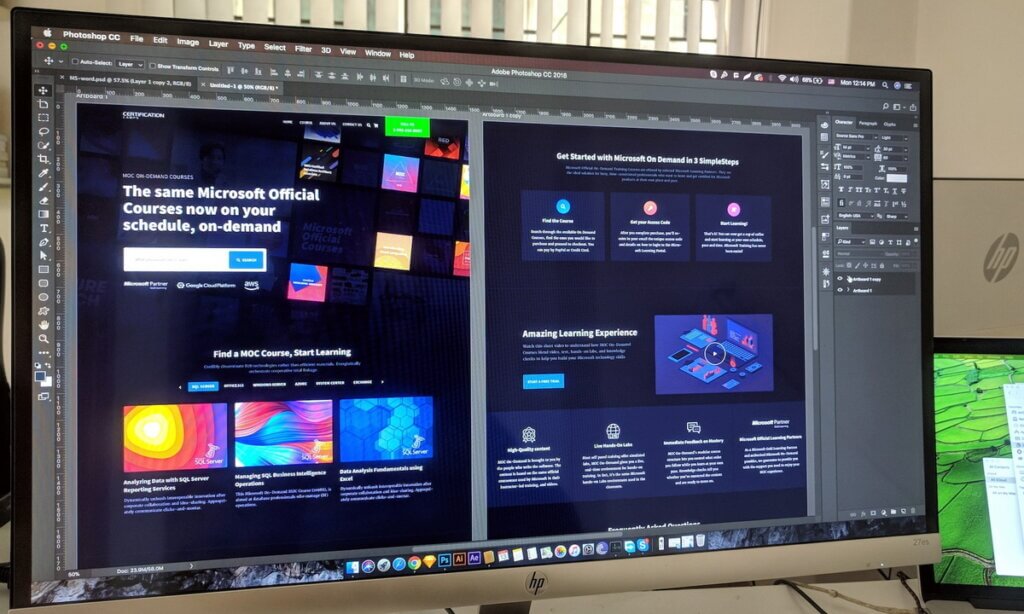Did you know there are currently over 1.2 billion Internet websites operating live around the world? ADA website compliance is crucial in helping those with disabilities!
Websites can be classified under the following categories, based on their primary purpose:
- Business
- Personal
- Informative
- Search-based
ADA Website Compliance Disability Categories
According to statistics released by the United States Census Bureau, 1 in 5 people in the U.S. suffers from some form of disability, which equals around 56.7 million people. Disability can be categorized as follows:
- Cognitive
- Hearing
- Neurodiverse
- Physical
- Vision

About the Americans with Disabilities Act (ADA)
The Americans with Disabilities Act (ADA) is a 1990 civil rights law aimed at preventing discrimination based on disabilities. This law is applicable to U.S. disabled people in the areas of employment, public transportation, public accommodations, and telecommunication. The enactment of this law ensures that people with disabilities enjoy the same public rights as much as non-disabled people in the U.S.
To comply with the ADA guidelines, the World Wide Web Consortium (W3C) released the Web Content Accessibility Guidelines (WCAG)[4] 2.0, which includes general recommendations to make Internet content easily accessible to a wider range of people, including disabled people. This is also known as ADA website compliance guidelines.
Accessibility Issues Discussed in WCAG 2.0
The Internet is a valuable source of information for many citizens and impacts various aspects of life including education, employment, health care, and recreation. Hence, it is important that the Internet must be able to provide equal access and opportunities for people with disabilities, thus ensuring that they can enjoy more active participation in modern society.
WCAG 2.0 categorizes the common accessibility issues under the following 4 main principles:
Perceivable, which addresses the visual and graphic layout of the content, including:
- Non-text controls, which accept user input, must have a label describing their purpose.
- The use of CAPTCHA as non-text content to provide security can be challenging for the visually impaired and must have alternate forms to suit these people.
- The use of multiple-input controls in an online form, which may not have a relevant label, can be an accessibility issue. For example, a Search functionality that uses the “magnifying glass” image.
Operable, which addresses the mode of access using the keyboard.
- To enable all webpage functionality through the keyboard, in addition to the menus and links.
- Avoid the presentation of video or multimedia content in a way that can lead to seizures.
- Sufficient time must be provided for users to read any webpage content and take appropriate action if any.
Understandable, which addresses the content and structure of the text.
- Except for the use of proper names and technical terms, all other words and phrases must be easy to read and understand.
- The use of unusual words, including jargon and idioms, must have a mechanism by which any user can decipher the meaning of each word.
- A mechanism to detect and correct any input errors must be provided to the user.
Robust, which addresses the tools that can provide support to the disabled.
- Attributes used in markup languages like HTML must have proper start and end tags and must be structured according to coding specifications.
In addition, there are other accessibility issues under ADA website compliance guidelines that must be noted when developing any webpage content, as listed below:
- Appropriate information for users to download technologies including Flash player and PDF readers must be provided.
- For users with color blindness, the recommended contrast ratio between the background and the content color should be ideally 3.5, in order to provide clear visibility.
- Data tables providing the information must not contain too many columns and rows, which can be a challenge for screen reader tools. Tables must be designed to provide data in an easier way.
- Selecting a value on form controls such as drop-down lists can trigger value changes in other related controls. The form must have a mechanism to inform this change, disabled users, particularly the visually impaired.

Best Practices for Website Designers
Website designers can use a variety of best and easy practices to make their website more disable-friendly. Here are a few recommendations:
- Use of Alt Tags
The use of Alt tags on images is very useful for visually challenged users, as most screen readers can capture the Alt tag text, thus allowing the user to understand the image or graphic. - Use of subtitles and transcripts
Use of subtitles particularly for video content, along with providing transcripts can be a very good practice, especially if your website contains a lot of videos. - Abbreviations with periods
The practice of writing abbreviations with periods (for example, U.S.A) is ideal for correct recognition by screen readers. - Avoid the use of “Click here” or “Click this” terms
While including an external link to your webpage content, avoid the use of the above terms, which can sound vague. Instead, specify the relevant title of the referenced page. - Use of color
Avoid the use of multiple color choices on your webpage, as this can be challenging for color-blind people. A general recommendation is the use of black text on a white background. Additional good practice is the use of a contrast ratio of 4.5:1, particularly in the case of product images. This problem is particularly critical when users with disabilities visit an online retail or e-commerce provider. - Use of large clickable items
The use of clickable images or items in a small area can be a problem for the visually challenged. Ensure a larger area for clickable items to make it comfortable for most users. - Reduce dependence on the mouse
Physically challenged people find it difficult to use the computer mouse. Ensure to provide an alternative for user actions that can be completed without the use of the mouse.
Additionally, webpage developers can fulfill the following considerations, when working on any project:
- Minimize the use of in-line frames and include appropriate title information for every web page.
- Avoid the use of deprecated HTML tags.
- The use of appropriate article headers when presenting text content Is recommended. Ensure that the heading tags, <H1>, <H2>, and <H3> are added with a clear and consistent structure. Avoid the usage of <p> tag as a replacement for <H3> or <H2>.
- As a rationale, use the <p> tag only if the number of words exceeds 10.
- As recommended by WCAG, avoid the use of quotes in your text. Replace quotes with the BLOCKQUOTE tag, which is easier for screen readers to understand.
- Some users with disabilities prefer to view the pages with a higher “Zoom ratio.” Ensure that you consider the appropriate design measures to take care of this accessibility issue.
Conclusion
Around 4.25 million disabled persons have never used the Internet. This is simply due to frustrations experienced by these users or due to a lack of trying.
With the fast evolution of the Internet, modern Internet users can access more sophisticated forms of information and resources, on a variety of Internet-enabled devices including tablets and smartphones. To enable the complete accessibility of the Internet, it must be made easily accessible to people with disabilities. Website designers can only enable this by considering the design perspective discussed in ADA compliance guidelines, for the disabled when constructing their webpage content.
Ready to begin your ADA website compliance journey? We offer custom compliance packages to suit any size business or website. Our team of experts will help you create a compliant website or mitigate a current website quickly and effectively. CONTACT ADA SITE COMPLIANCE today!
Share via:

Speak With An Expert Now
Have a question?
We’re always here to help.
The ADA prohibits any private businesses that provide goods or services to the public, referred to as “public accommodations,” from discriminating against those with disabilities. Federal courts have ruled that the ADA includes websites in the definition of public accommodation. As such, websites must offer auxiliary aids and services to low-vision, hearing-impaired, and physically disabled persons, in the same way a business facility must offer wheelchair ramps, braille signage, and sign language interpreters, among other forms of assistance.
All websites must be properly coded for use by electronic screen readers that read aloud to sight-impaired users the visual elements of a webpage. Additionally, all live and pre-recorded audio content must have synchronous captioning for hearing-impaired users.
Websites must accommodate hundreds of keyboard combinations, such as Ctrl + P to print, that people with disabilities depend on to navigate the Internet.
Litigation continues to increase substantially. All business and governmental entities are potential targets for lawsuits and demand letters. Recent actions by the Department of Justice targeting businesses with inaccessible websites will likely create a dramatic increase of litigation risk.
Big box retailer Target Corp. was ordered to pay $6 million – plus $3.7 million more in legal costs – to settle a landmark class action suit brought by the National Federation of the Blind. Other recent defendants in these cases have included McDonald’s, Carnival Cruise Lines, Netflix, Harvard University, Foot Locker, and the National Basketball Association (NBA). Along with these large companies, thousands of small businesses have been subject to ADA website litigation.
Defendants in ADA lawsuits typically pay plaintiff's legal fees, their own legal fees for defending the litigation, and potential additional costs. In all, the average cost can range from tens of thousands of dollars, to above six figures. There are also high intangible costs, such as added stress, time and human capital, as well as reputational damage. Furthermore, if the remediation is incomplete, copycat suits and serial filers can follow, meaning double or triple the outlay. It's vital to implement a long-term strategy for ensuring your website is accessible and legally compliant.



